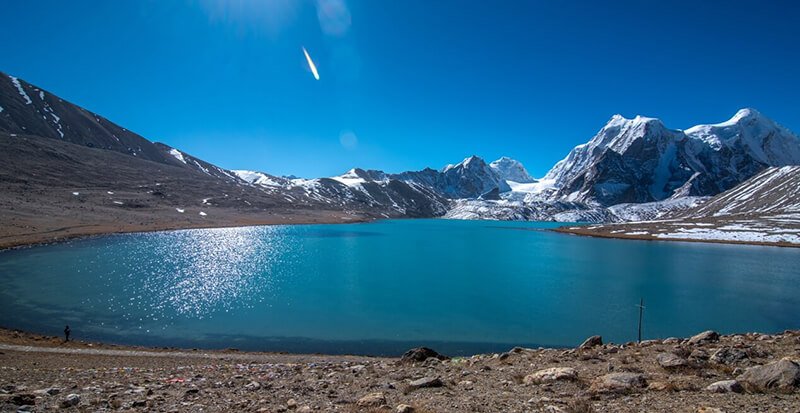GANGTOK: Discussions and planning are at an advanced stage for a scientific field study of the 19 highly vulnerable glacial lakes in Sikkim this July by a multi-agency team from Centre and State government.
Prabhakar Rai, special secretary-cum-director of Sikkim State Disaster Management Authority (SSDMA) said:
We are planning a physical expedition of the 19 highly vulnerable glacial lakes of Sikkim. Discussions are going on with the National Disaster Management Authority (NDMA) and Ministry of Home Affairs. Once that is approved, from July onwards all the glacial lakes would be visited physically and automated weather stations would be installed,
Prabhakar Rai
It was informed that the expedition team formation is under process by the NDMA.
Sikkim has above 400 glacial lakes, all in remote mountainous border areas and at altitudes above 17000 ft in western, eastern and northern parts. Among them, 19 glacial lakes are said to be ‘highly vulnerable’ to GLOF (glacial lake outburst flood). The Teesta riverine belt from North Sikkim up to neighbouring North Bengal had suffered extensive destruction during a GLOF at South Lhonak lake last October.
During the proposed field visit, the expedition team would physically monitor the glacial lakes, check the water levels and install automated weather stations. These stations will then transmit daily data to the authorities concerned.
Last September, a 31-member team from NDMA, SSDMA and other agencies had conducted a study trip of South Lhonak and Shako Chu glacial lakes in North Sikkim where they also installed the automated weather stations. However, the system at South Lhonak lake stopped functioning from September 20 and as such, early warning could not be issued when the flood outburst occurred on October 3-4 intervening night.
It was informed that the automated weather station at Shako Chu is still working, transmitting images and giving daily data to the State authorities. The daily data signifies that everything is okay at that glacial lake, informed the SSDMA.
Meanwhile, National Remote Sensing Centre and C-DAC through satellites have been continuously keeping a watch over the vulnerable glacial lakes, though authorities here assert there is no co-relation between glacial lakes and rising water levels of Teesta river during the monsoon.
Speaking to media here on Friday, State chief secretary VB Pathak maintained that here is no threat to glacial lakes.
“The National Disaster Management Authority is making continuous observation and monitoring of over 15 glacial lakes in Sikkim. There is no threat as such. The National Remote Sensing Centre and C-DAC is working in tandem with State Science & Technology Department, sharing important data. There is nothing alarming, or potential threat of GLOF during the monsoon rainfall,” said Pathak.
Adding to this, the SSDMA director shared that during a recent high-level meeting at Delhi, top officials from NDMA and Home ministry apprised the Sikkim government that there is no such threat of glacial lake outburst based on daily satellite images.
The National Remote Sensing Centre is constantly monitoring the glacial lakes across the Himalayan region including Sikkim. If any glacial lake is showing abnormal increase in size or rise in water levels, immediate information is shared with the concerned State government.
Currently, Sikkim is witnessing heavy monsoon rains almost daily which have triggered a rash of landslides causing loss of nine lives beside widespread damage to properties and road networks in various areas, particularly North Sikkim.
NH 10, the State’s lifeline, is also severely disrupted with rising Teesta river water levels causing road subsidence at different locations, particularly at Melli, Ravi Jhora and Likhuveer.
Experts have already shared their concerns that this monsoon would be challenging for the Teesta riverine areas in Sikkim and Kalimpong district due to heavy siltation and morphology change of the river due to last October’s flash flood.






